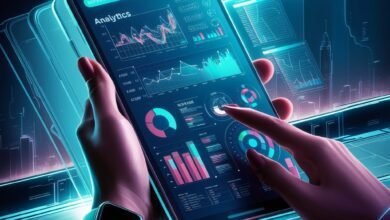
In the ever-evolving landscape of digital technology, cybersecurity has become a critical concern for businesses, governments, and individuals. With the increasing frequency and sophistication of cyber attacks, it is more important than ever to understand the role of cybersecurity analytics in identifying and mitigating threats.
You can opt for a Data Analytics Training program in Delhi, Noida, Pune and other parts of India. This article delves into the world of cybersecurity analytics, exploring its importance, methodologies, tools, challenges, and future trends.
Understanding Cybersecurity Analytics
Cybersecurity analytics is the process of collecting, analyzing, and interpreting data from various digital sources to identify and mitigate potential security threats. It is a crucial aspect of modern digital defence, combining data science, IT, and cybersecurity. This field focuses on detecting unusual activities and patterns that indicate breaches or impending attacks.
By utilizing data from network logs, system events, and user behaviours, cybersecurity analytics enables organizations to proactively identify vulnerabilities and respond swiftly to threats. This data-driven approach is essential for protecting digital assets and sensitive information in an increasingly interconnected and digitalized world.
The Importance of Cybersecurity Analytics
Cybersecurity analytics is vital for safeguarding digital assets against increasingly sophisticated cyber threats. By analyzing data patterns and trends, it identifies unusual activities that may signal breaches or imminent attacks, enabling proactive threat response. This approach minimizes damage and prevents future incidents.
Cybersecurity analytics enhances an organization’s security posture, protecting sensitive information from unauthorised access, damage, or theft. In today’s digital age, where data breaches can have devastating consequences, the role of cybersecurity analytics is indispensable in maintaining the integrity and confidentiality of digital information, thus ensuring business continuity and trust.
Data Sources for Cybersecurity Analytics
In cybersecurity analytics, diverse data sources are crucial for thorough threat analysis. Key sources include network traffic logs, which monitor data flow for unusual patterns, and system event logs that track internal system activity. Application logs offer insights into software operations, flagging potential vulnerabilities. User behaviour data is pivotal for identifying deviations that suggest security compromises.
Additionally, integrating external threat intelligence feeds provides information on known cyber threats and vulnerabilities. Together, these data sources create a comprehensive landscape, enabling effective identification and mitigation of cybersecurity threats in a digitally dependent world.
Methodologies in Cybersecurity Analytics
Cybersecurity analytics employs various methodologies to identify and assess threats. Some of the key approaches include:
- Anomaly Detection: This method involves identifying patterns of behavior that deviate from the norm. Anomalies can indicate potential security incidents, such as a user accessing files at unusual times or a sudden spike in network traffic.
- Predictive Analytics: Using historical data, predictive analytics helps in forecasting potential security incidents before they occur. This approach can identify trends and patterns that are indicative of future threats.
- Behavioral Analytics: By analyzing user behavior, cybersecurity systems can detect irregularities that may suggest malicious activity, such as compromised user accounts or insider threats.
Tools and Technologies in Cybersecurity Analytics
The effectiveness of cybersecurity analytics largely depends on the tools and technologies used. Some of the key tools include:
- Security Information and Event Management (SIEM) Systems: These systems aggregate and analyze data from various sources to provide real-time security alerts.
- Machine Learning and AI: Advanced algorithms can automatically identify patterns and anomalies in large datasets, improving the accuracy and speed of threat detection.
- Data Visualization Tools: These tools help in presenting data in an easily understandable format, enabling security professionals to quickly assess and respond to threats.
Challenges in Cybersecurity Analytics
Despite its advantages, cybersecurity analytics faces several challenges:
- Volume of Data: The sheer volume of data generated by modern digital systems can be overwhelming, making it difficult to identify relevant security information.
- Evolving Threat Landscape: As cyber threats evolve, analytics tools must continuously adapt to detect new types of attacks.
- False Positives and Negatives: Distinguishing between legitimate activities and genuine threats can be challenging, leading to false alarms or missed detections.
- Skill Gap: There is a significant skill gap in the cybersecurity field, with a shortage of professionals who have expertise in both cybersecurity and data analytics.
Future Trends in Cybersecurity Analytics
Looking ahead, several trends are likely to shape the future of cybersecurity analytics:
- Integration of Artificial Intelligence: AI and machine learning will become increasingly integral in analyzing complex data sets and identifying sophisticated threats.
- Automated Response Mechanisms: Systems will not only detect threats but also automatically initiate responses to mitigate them.
- User and Entity Behavior Analytics (UEBA): This emerging field focuses on detecting insider threats and compromised accounts by analyzing user behavior.
- Cloud-based Analytics: As more organizations move to cloud computing, cloud-based security analytics will become more prevalent, offering scalability and flexibility.
Conclusion
To sum up, cybersecurity analytics is an essential part of the contemporary digital defence plan. It combines information technology, cybersecurity, and data analytic intricacies to produce a strong defence against the dynamic array of cyber threats. It is impossible to exaggerate the significance of this sector since it allows enterprises to change their approach to cybersecurity from being reactive to proactive. By leveraging diverse data sources such as network logs, system events, and user behaviour, cybersecurity analytics offers a nuanced understanding of potential vulnerabilities and emerging threats.
Promising developments will shape cybersecurity analytics in the coming years. Threat detection and response will be revolutionized by the integration of AI and machine learning, enabling more automated and sophisticated handling of security issues. Furthermore, the emergence of user behaviour analytics and cloud-based analytics will improve the capacity to identify internal threats and oversee security in more dynamic settings.
In the end, safeguarding sensitive data and digital assets for both individuals and enterprises depends on cybersecurity analytics’ ability to detect and mitigate risks. Cybersecurity analytics play an increasingly important role as digital threats continue to rise in complexity and frequency; as such, they are an essential component of any complete security plan.




